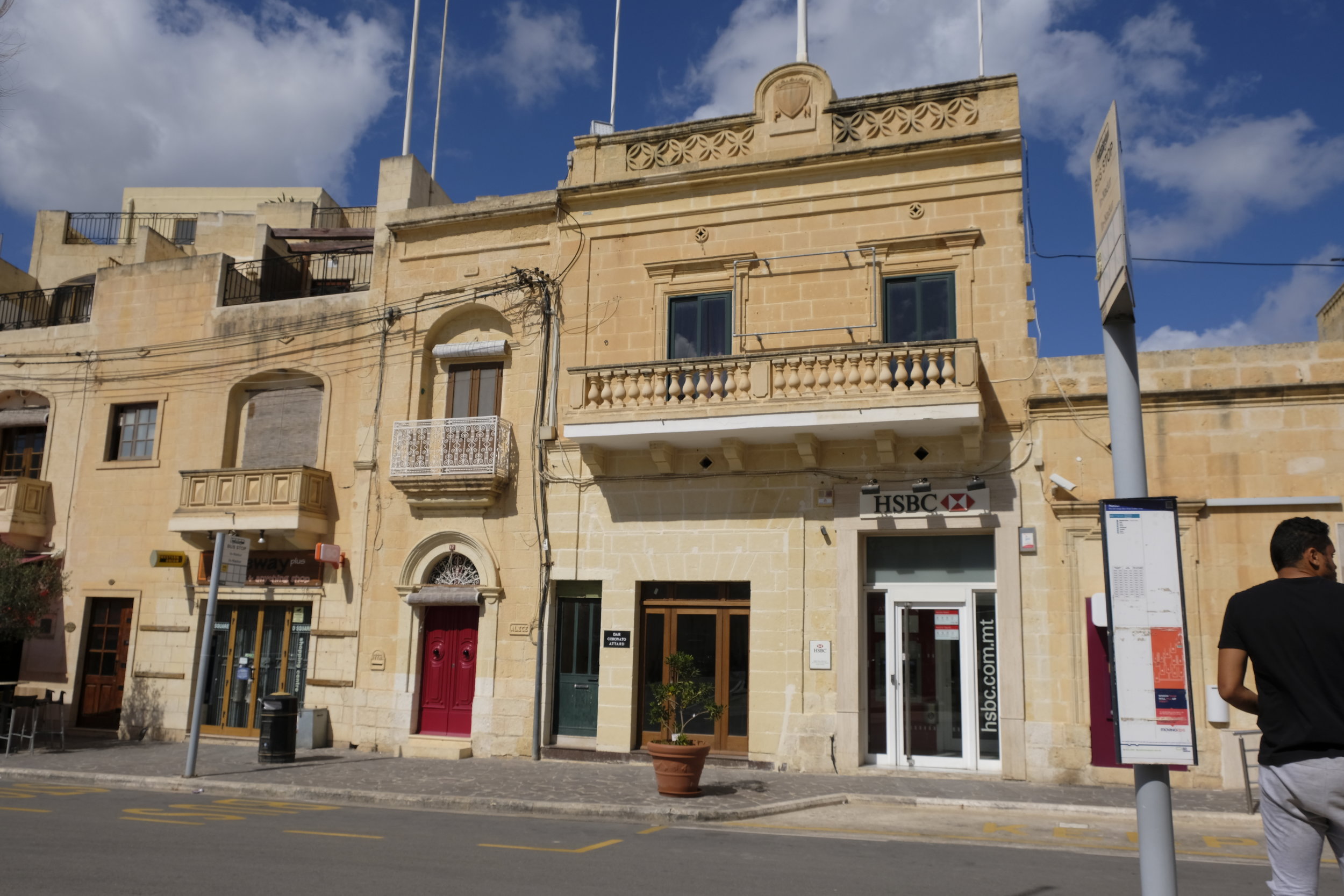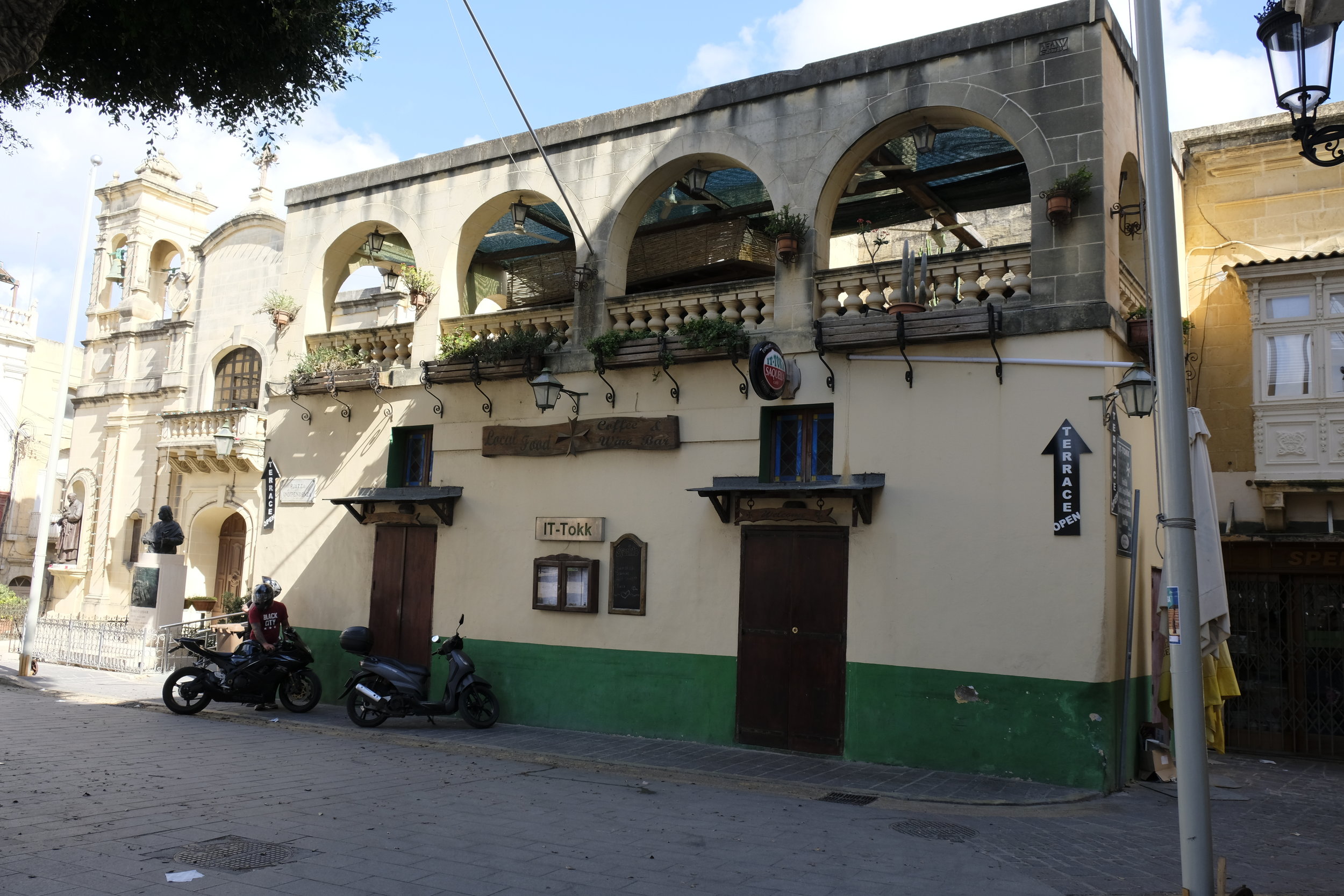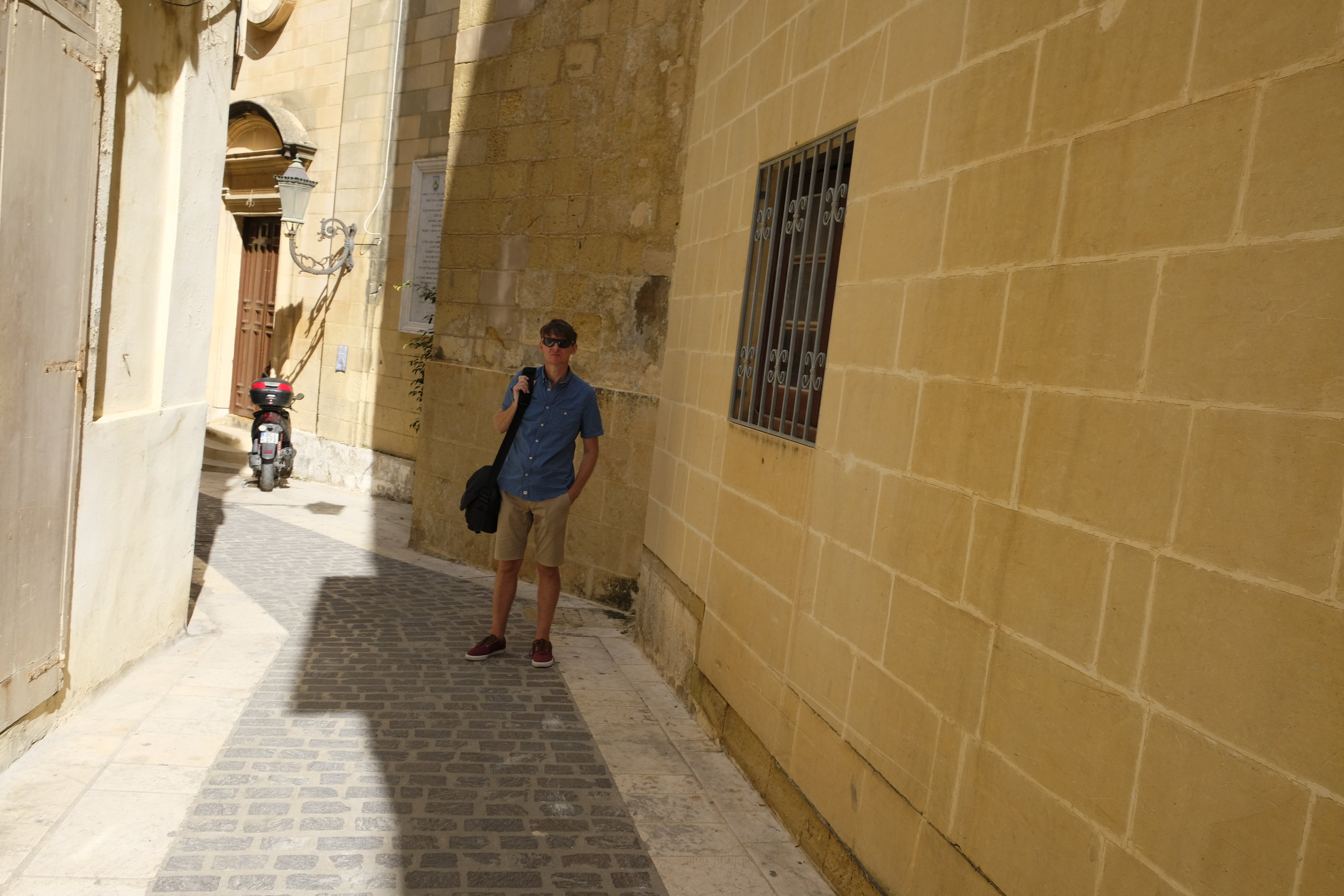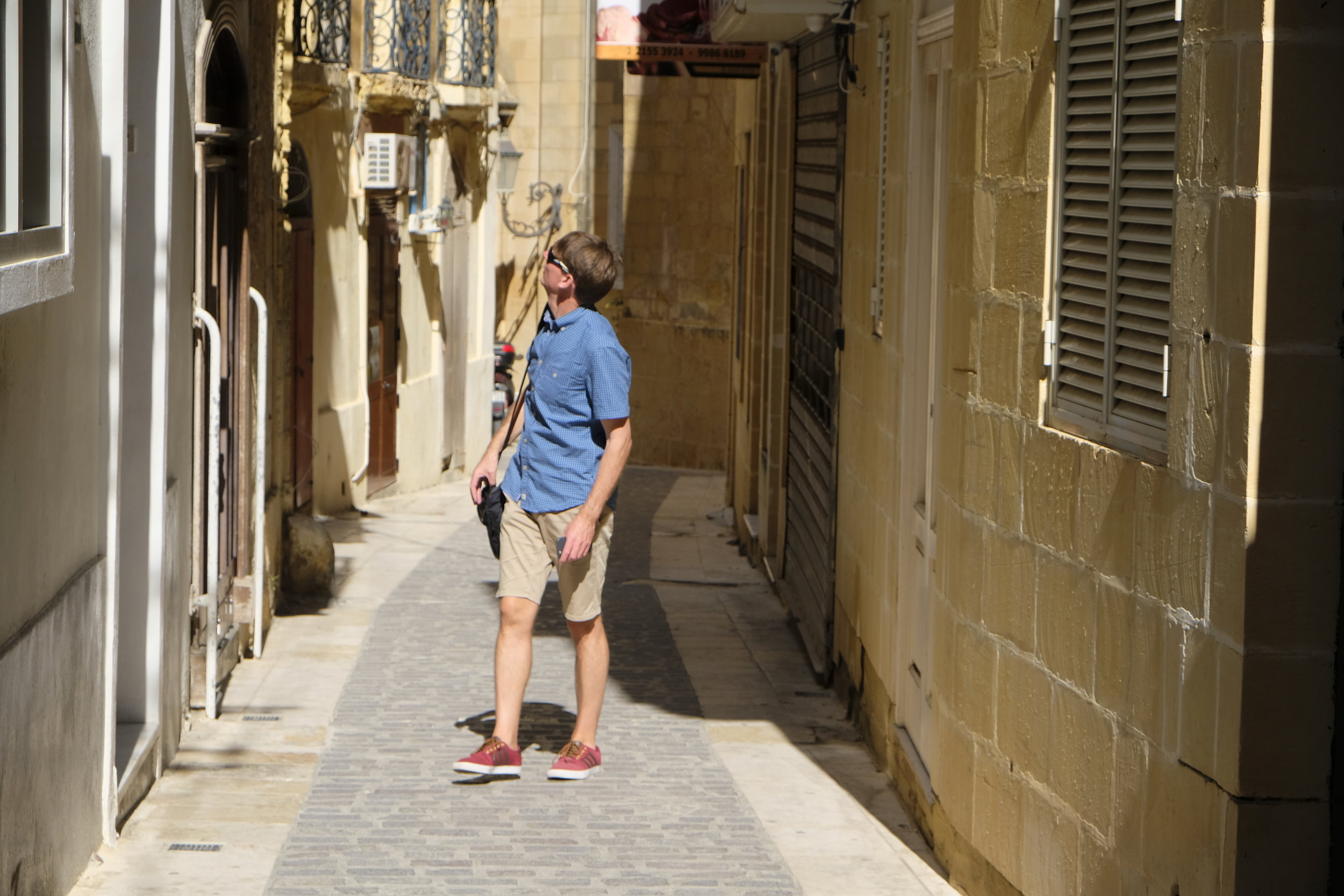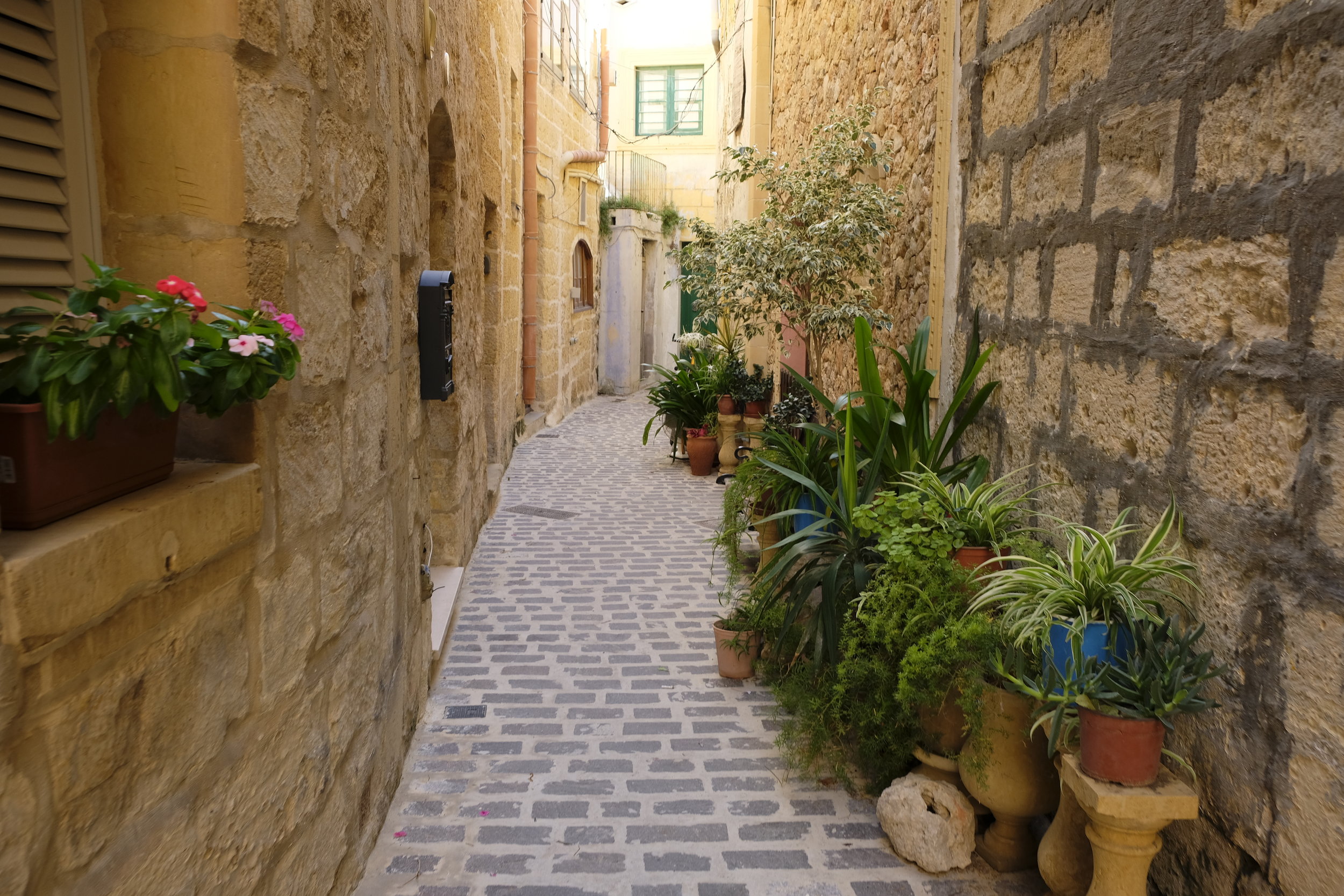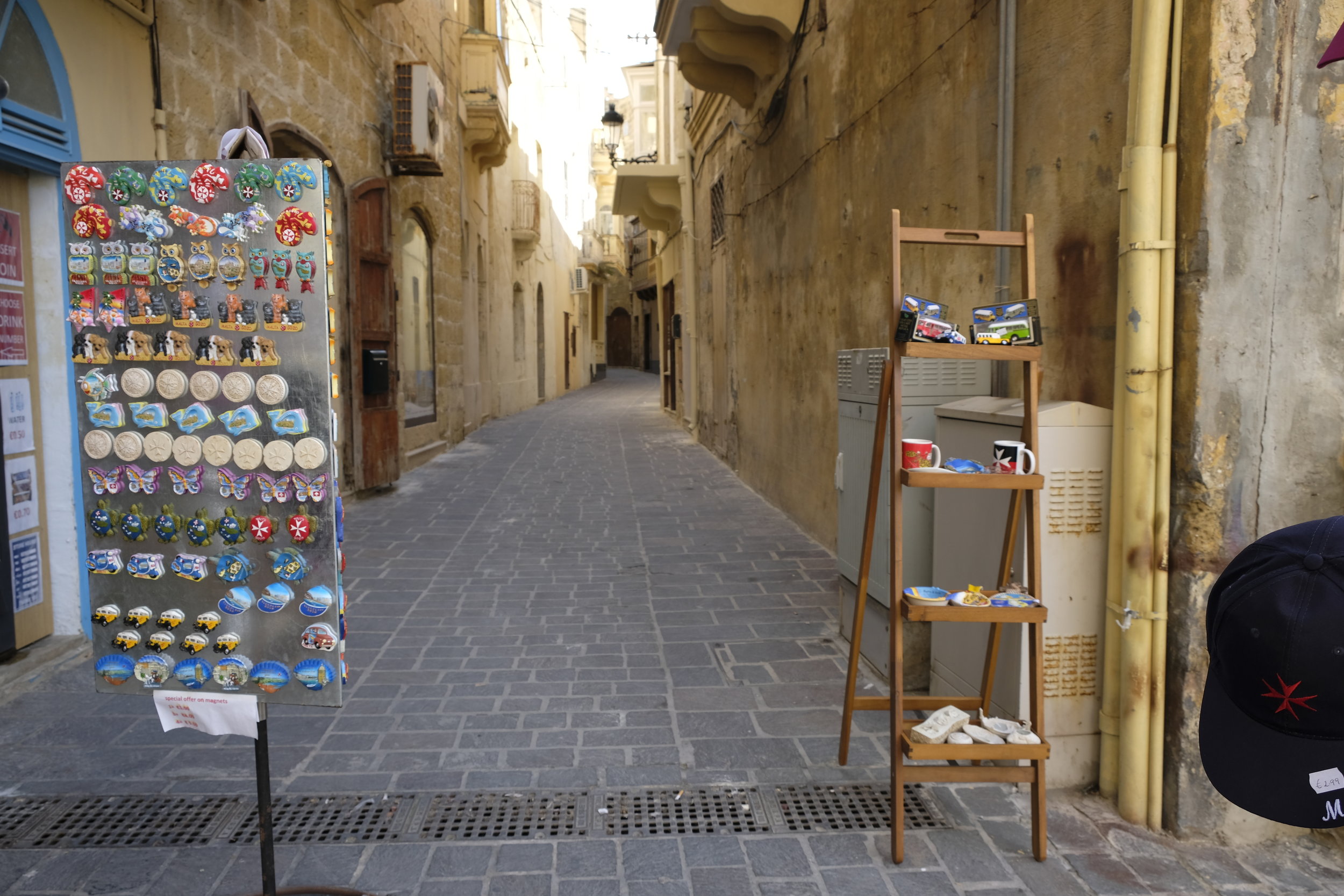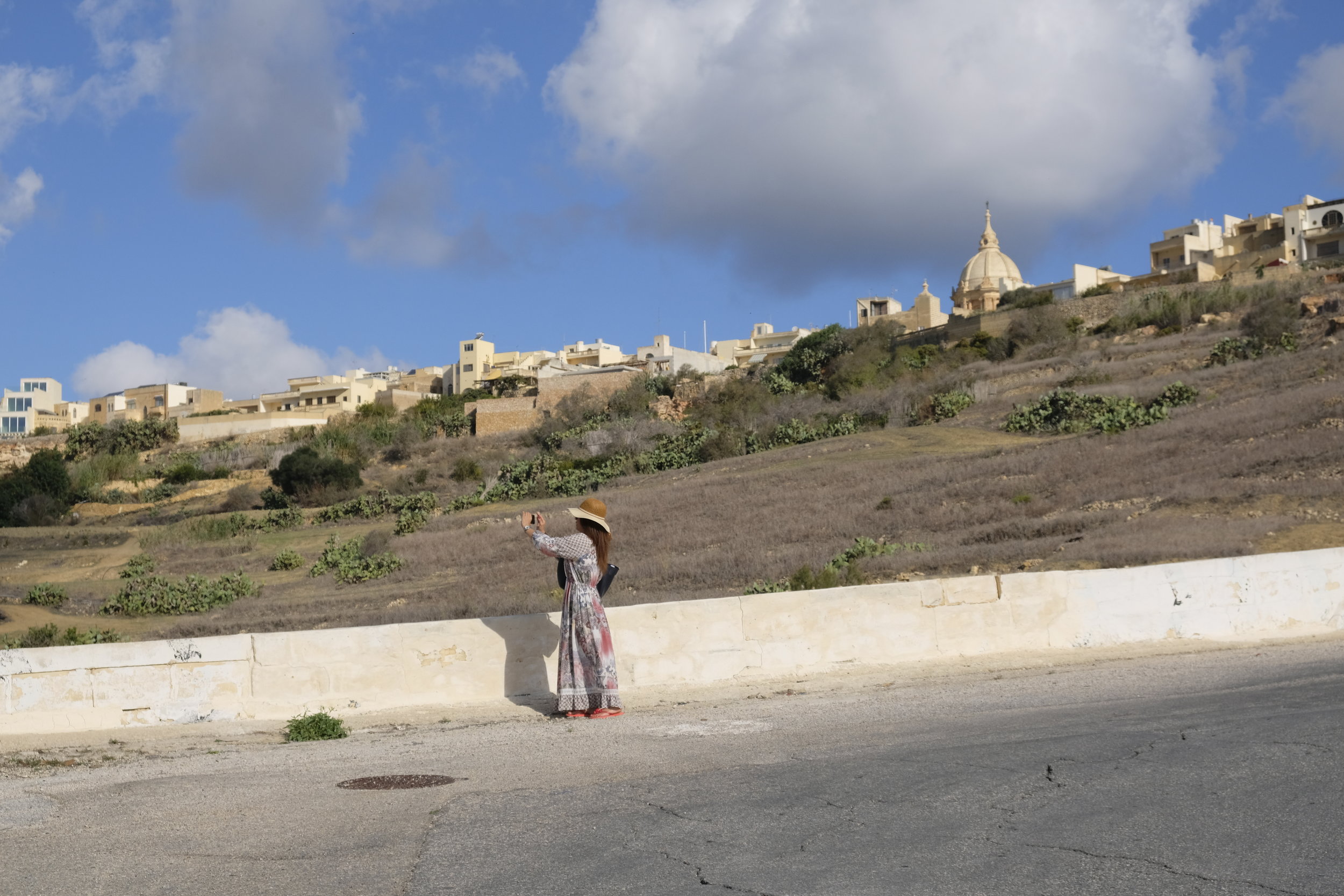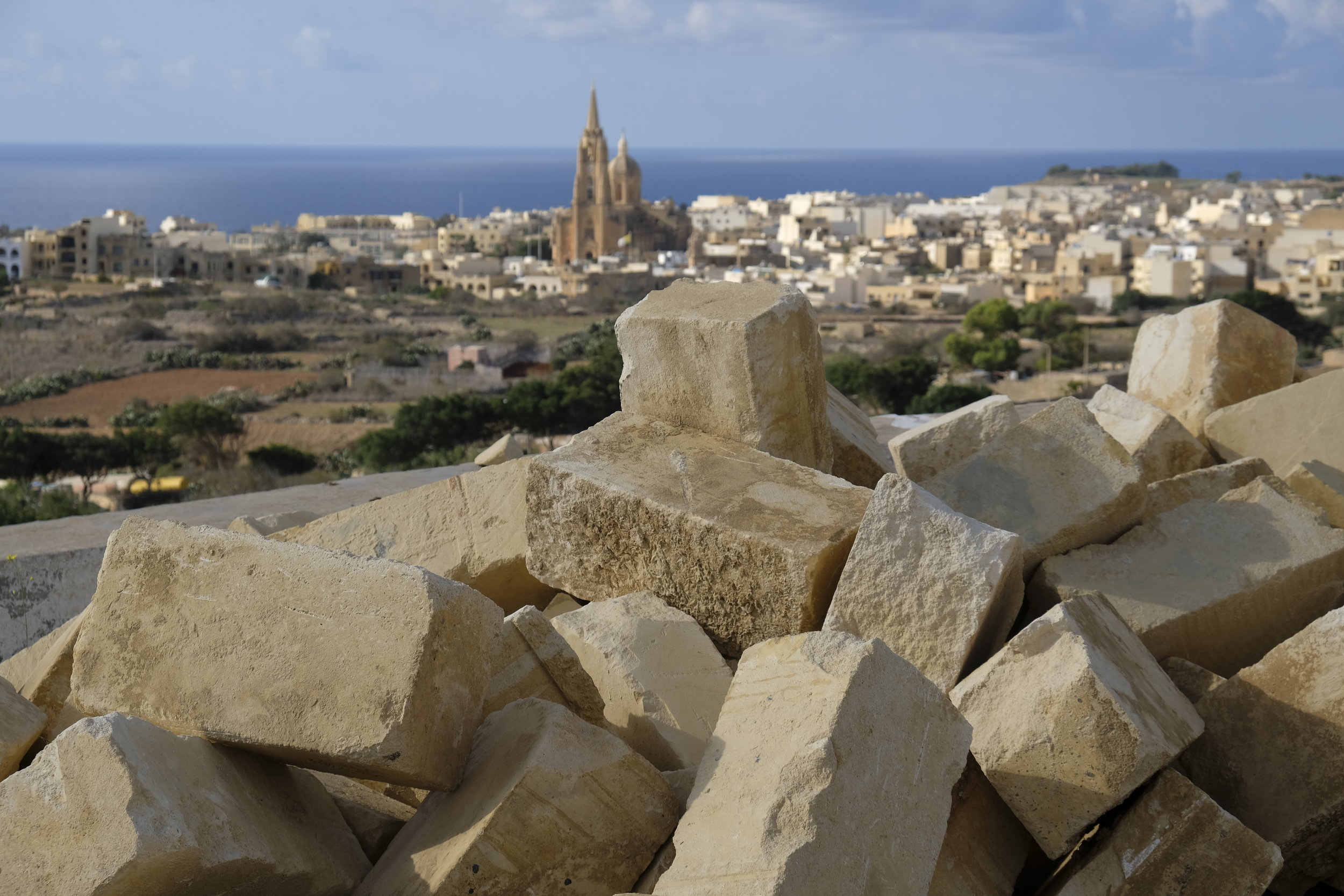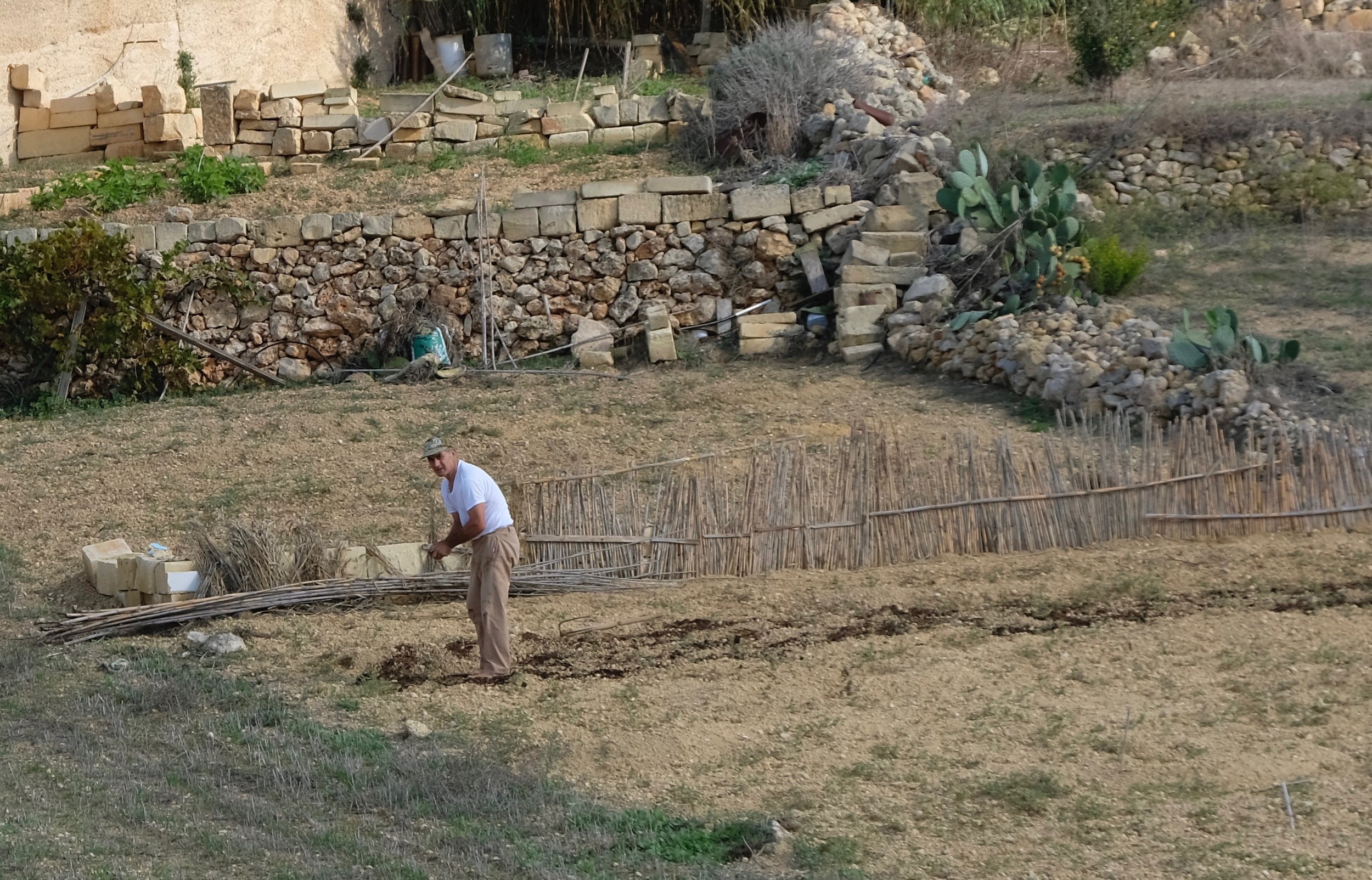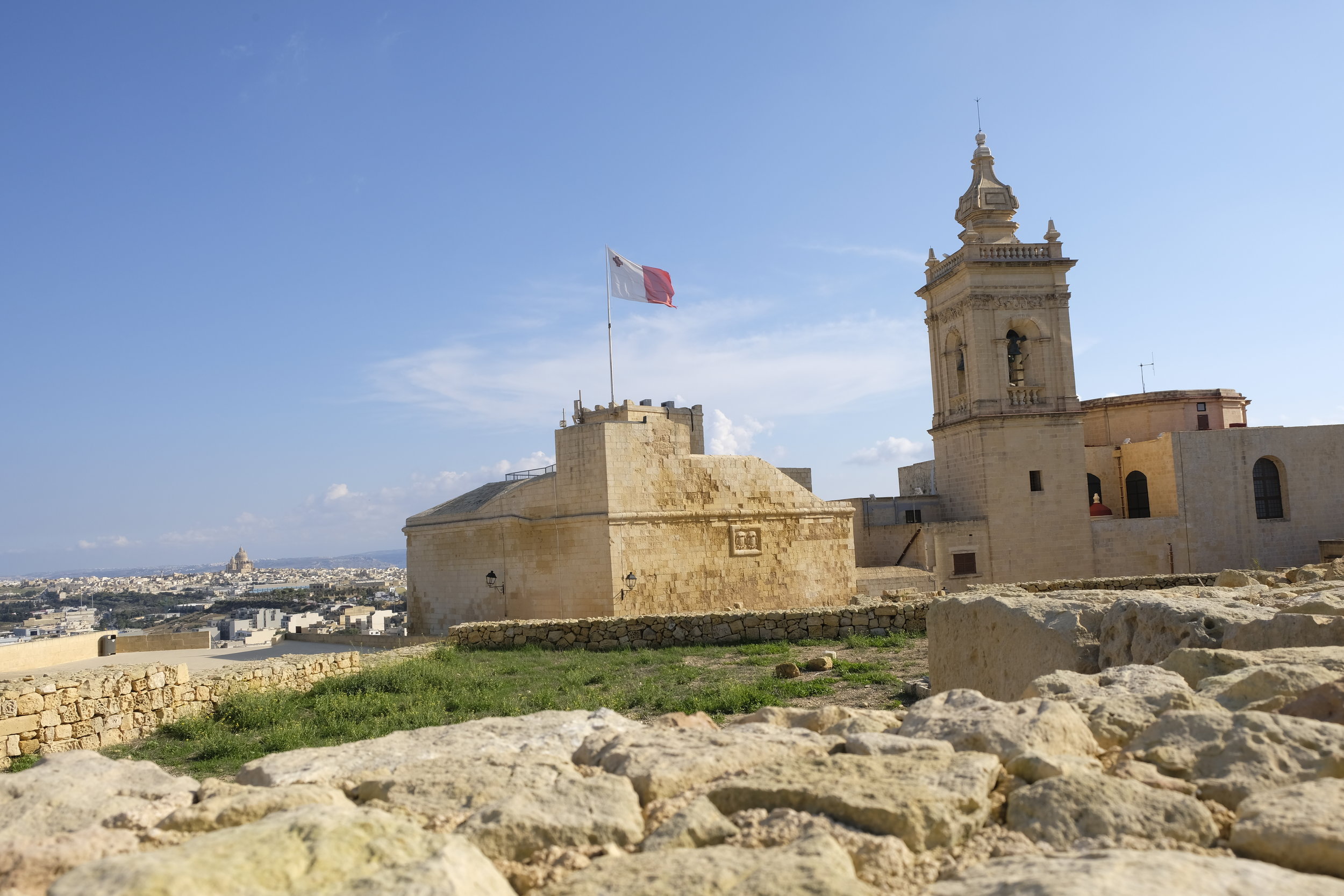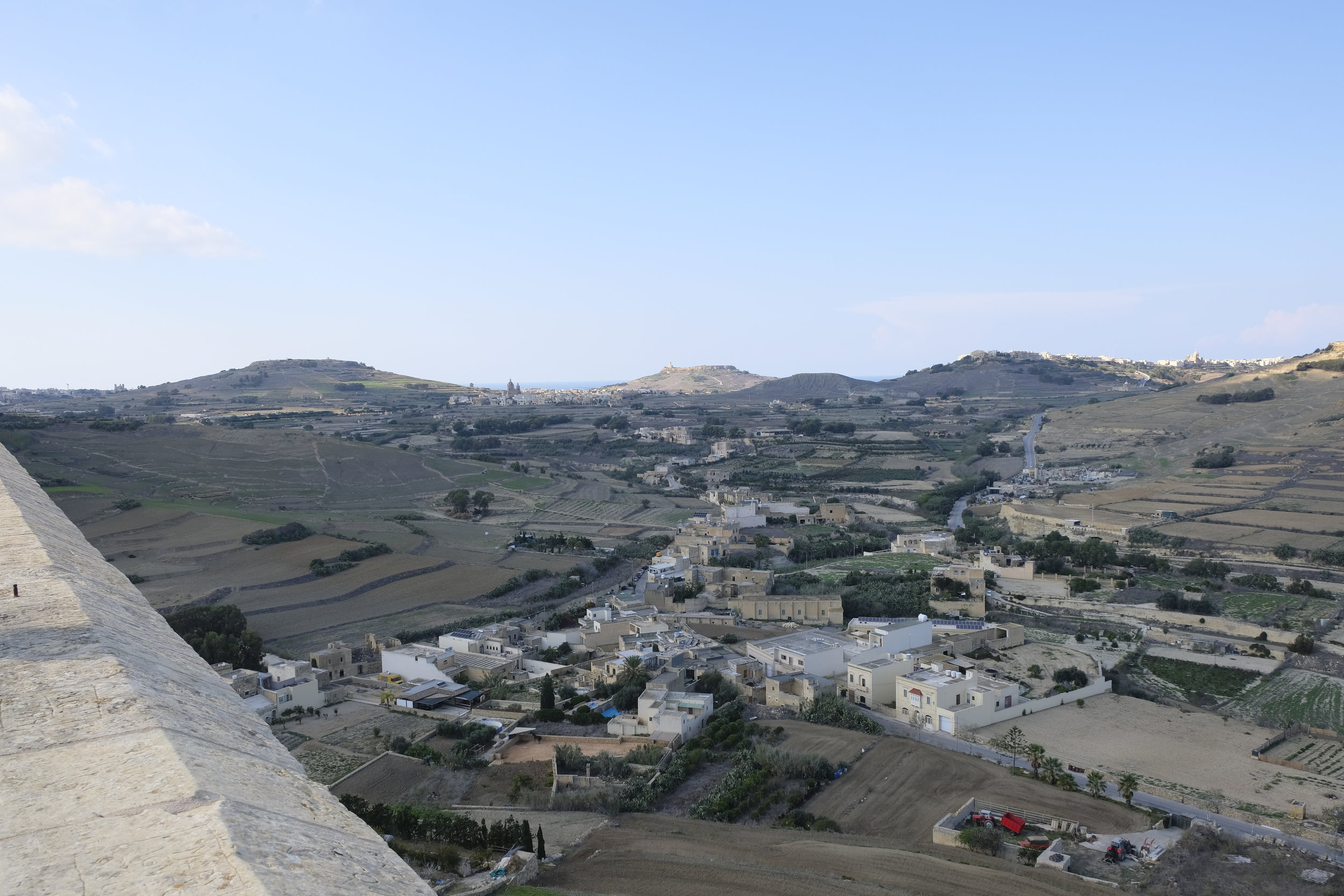View inside entrance of Ta Tumasa, In-Nadur, Gozo
Hotel review: Ta Tumasa, Gozo, Malta
‘Paul, you’ve got to go to Malta,’ Ian said, in early 2018. ‘It’s packed with history, the weather’s great, they speak English and it’s not too far.’ Another good friend, Wayne, proposed to his now wife, Petra, on Malta 24 years ago. They have two grown up sons – and a dog – and they’re still very happy.
Ian then recommended Ta Tamusa, based on a recent visit with his partner. ‘Lovely place, quiet, nice people.’ A holiday on Malta seemed a great idea, so we booked Ian’s Ta Tumasa.
The good feelings we had about Ta Tumasa lasted a full six months … until a week before our flight, when Ian casually asked if were ready for Gozo. ‘Gozo!? What do you mean, Gozo?’ I asked. ‘Oh, didn’t I tell you?’ he answered, surprised. ‘Ta Tumasa’s on Gozo.’
We didn’t know anything about Gozo. We wanted to go to Malta. Once home, we scrambled about for an hour or so, but without much conviction, looking for somewhere in Valletta, Malta’s capital.
But our hearts weren’t in it.
Yes, we wanted to stay on Malta, but the pictures we’d seen months earlier made Ta Tumasa look fascinating, Middle Eastern. And Ian had recommended it – even if he’d forgotten to mention Gozo.
So, we didn’t cancel, and instead of spending hours looking for a Malta alternative, we spent it looking at Google Maps, wondering how the hell we’d get from this tiny Maltese island that we knew just about noting about to Malta every day.
We shouldn’t have bothered: both Ta Tumasa and Gozo were fantastic, and we visited Malta just once, for a day trip.
To be honest, we were still a touch unconvinced as we landed in Valletta in early October. We were pretty certain we’d enjoy it, but in our hearts we both wanted to be in Valletta, see the museums, eat in good restaurants and – as this was our first real holiday in quite a long time (I can’t seem to count visiting ‘places’ for journalism as ‘proper holidays’) – just be tourists.
Getting to Ta Tumasa
There are two choices for getting from the airport to Gozo: bus, taxi or hire car. Bus is not only the green option but it also only costs just €2 to the ferry terminal at Ċirkewwa. The ferry for a single passenger across to Gozo, without car or motorbike, is a reasonable €4.65. You then need to take another bus from the Gozo ferry terminal to your hotel (fantastically, your bus ticket is valid for two hours so you might be able to use it for this stage also).
The drawback of the bus from the airport to Ċirkewwa is that it takes between 1.14 hours (direct) and 1.42 (one change), and even the shorter journey feels like a long time on a bus on Malta’s roads – lots of ups and downs, veering between not particularly fast and slow, and invariably the bus is jam packed.
Most hotels will likely organise a taxi direct from the airport – to Ta Tumasa, in the town of In-Nadur, the total cost is €67, which includes ferry crossing, and it might save you half the time. Compared with a bus, it’s hardly the most sustainable option, and it obviously cost a lot more - both Malta and Gozo have hire car companies, including the usual international firms, and bike rentals.
Ta Tumasa
Our ferry journey was a joy, with a cerulean, calm sea, and view from the front of the ship first across to the small island of Comino, and then the approaching Gozo. A further 20-minute journey towards Ta Tumasa left us fascinated by the wonderful Middle East-like architecture, and as we climbed higher up the valley, the views of the small settlements and agricultural land.
Of course, we’d seen the photos of our hotel, but we’d both presumed the impressive Middle East design of the place was mainly for effect. While it is true that it’s been built and designed to impress guests, we quickly realised that it perfectly fitted in with the feel of the local area, In-Nadur, and the traditional architecture of the whole island.
It was a promising start, and we began to wonder whether maybe Ian’s forgetfulness could turn out to be a blessing.
Though quite an imposing building of sandstone blocks, high ceilings and open plan reception leading into the kitchen-cum-dining area, Ta Tumasa is also in many ways pretty basic. Owner Samara met us at the entrance (the hotel is situated slightly off the main street, along a narrow alley) and after paying (€240 for four nights), it was the last we saw of anyone in charge – except Francesca every morning for breakfast. To be clear: this is not a criticism. It works perfectly well. It’s a mid-range ‘farmhouse’, in which all the basics are supplied, and guests are expected to get on with it.
Francesca
Francesca was one of many stars during our trip to Gozo: she cheerfully made breakfast, and she loved to talk about the island (even though she’s originally from Malta), it’s history and culture; she gave good on advice on where to go and what to visit, and how to get there; and, similar to so many people there, she was a warm and open host.
And to prove it, the morning before we were due to leave, we mentioned that we’d spotted some Imqaret, a biscuit-kind of desert filled with dates, and wondered whether she had a recipe. She did, but insisted that she make some, freeze them, and give them to us to take home as we were leaving, in order to deep fry when we got home. As we were leaving the next day, she handed us the promised Imqaret, replete with detailed recipe, and we baked them at home that evening. They were delicious - just as she’d promised they’d be. Thanks, Francesca - for everything.
The swimming pool at Ta Tumasa isn’t huge but it’s a good place to cool down, then laze around before or after a day out on the island
Ta Tumasa has five rooms, all of them decently sized, with marble floors and sandstone walls. Our room, No.4 - Double Deluxe, measures 22 square metres, with the familiar sandstone walls. It has a large wood-framed double bed, three large fitted double wardrobes (a shelf in one is home to the fridge, which was a touch noisy) and two chests of drawers in dark woods either side of the bed (matching the bed) and another larger one near the door.
It has a modest balcony overlooking neighbouring buildings, with the swimming pool 15 metres away (beneath), with a glimpse of the sea in the far distance. The usual flat-screen TV (international news channels and BBC Entertainment, for example), kettle for tea and instant coffee, and a very small bathroom. And don’t forget, the sockets are British-like three pin versions.
View from the balcony, across to the swimming pool, with San Blas Bay 2km away in the distance
Francesca arrives early to prepare breakfast, which is available from 8 till 10. Guests can have an English breakfast (fried bacon, eggs and so on), cereals (nothing particularly healthy), and a large selection of fruits (such as apples, bananas, grapes and oranges) and yoghurts.
Where are the prickly pears!?
Similar to much of the island, there were none of the ubiquitous prickly pears available for breakfast - though Francesca would likely get some, if requested (if you want things like croissants, you need to fill in a form the day before, and you’re charged extra). We saw the elegant green cacti across Gozo, thriving in the dry island heat, but we were puzzled as to why they weren’t more prized for their delicious, healthy fruit.
We’ve subsequently read that they are somewhat looked down upon by some locals, who see them as cheap food for the less well off. We’ve also read hopeful speculation that they might become the next big fashionable ‘super fruit’. While it’s clearly bollocks that fruits are branded and propagandised to the degree that they becomes a ‘super fruit’, with their rich flavours and colours surely it’s only a matter of time … well, at least before someone becomes even richer on the back of them.
Taxi driver, wife on speaker-phone and delicious prickly pear - a great combination!
These fruits are not easy to pick and prepare, hence, their moniker of ‘prickly’. But their widespread availability across Gozo make it appear on occasion that they’re hanging from every field. Red or yellow, from around August, this ripe fruit is abundant, and delicious.
They were as delicious as they looked, and much more juicy than anything coming from a cactus should ever be.
Of course, like typical tourists, we may have been looking in all the wrong places, but we never saw any for sale - that is until on our way home, being forced to (guiltily) take a taxi for fear of missing our flight home, our unforgettable taxi driver – after waxing lyrical about everything on Gozo, but mostly prickly pears, and after getting his wife on the taxi’s speaker-phone to fabulously support her husband’s viewpoint (thanks, Mary!) – stopped to buy us some at a small out-of-the-way shop. They were as delicious as they looked, and much more juicy than anything coming from a cactus should ever be.
We ended up spending one day on Malta, leaving just three whole days for Gozo. It wasn’t enough. Ian, however, was right: it is packed with history, the weather is great and they do speak fluent English. Admittedly, getting to Gozo, rather than Malta, takes a bit of time and effort, but we did love Gozo.
We’ll definitely be back.
Nadur Basilica, the heart of In-Nadur
In brief
Local area, In-Nadur, and getting around: Ta Tumasa has bikes for hire, costing €5 for a day, though we opted to walk everywhere or take buses. We used Google Maps for timetables and to locate bus stops, which on the whole worked, though in In-Nadur not all buses seemed to go where promised on bus stop timetable signs, and a couple of times buses went straight past because they were packed. If this is going to bother you too much, you can hire a car … or , to be honest, go somewhere else on holiday. It’s a small-ish island, and getting to anywhere is not overly troublesome.
Eating: Ta Tumasa is bed & breakfast only but there is a modern kitchen and guests can cook there - you’d obviously need to tidy up afterwards.
Restaurants: it’s best to avoid pizza restaurants in In-Nadur’s market square, near the impressive Nadur Basilica (dating back to 1760), unless there is noting else. We arrived on a Saturday evening and it was our only option. It wasn’t awful, but it’s basic, cheap and cheerful fare. The Fat Rabbit (with accompanying hotel) is the best restaurant in town and the Italian Osteria Scottadito has a good reputation.
And if you’re in In-Nadur, don’t miss the opportunity to visit the excellent, rustic Maxokk Bakery for a traditional ftira (similar but superior to any pizza). For a post-meal drink, head across to Gebuda, which is a small bar with a huge array of craft and familiar beers, plus wines and cocktails - and the owner’s affability lends it a fun, friendly atmosphere.
-
October 2025
- Oct 16, 2025 New study reveals Munich travel habits Oct 16, 2025
-
August 2023
- Aug 29, 2023 Argentina's Andes: beauty and tranquility Aug 29, 2023
-
January 2020
- Jan 8, 2020 Surprised CSU grassroots rejected a Muslim? Jan 8, 2020
-
December 2019
- Dec 13, 2019 It’s not just MPs who you’ve lost Dec 13, 2019
-
July 2019
- Jul 4, 2019 Robert Andreasch, worthy winner of Munich journalism award Jul 4, 2019
- Jul 1, 2019 Munich police raid on refugee shelter leaves mother with broken arm and son arrested Jul 1, 2019
-
May 2019
- May 5, 2019 New Pinakothek, exhibition: Die Neue Heimat (1950-1982), A Public Housing Corporation and Its Building May 5, 2019
- May 1, 2019 Spotlight magazine - Munich’s Brits: a sporting community May 1, 2019
-
April 2019
- Apr 17, 2019 Paris and Taq Kasra, Baghdad Apr 17, 2019
- Apr 11, 2019 Denmark Apr 11, 2019
-
March 2019
- Mar 8, 2019 Passport decision time Mar 8, 2019
-
February 2019
- Feb 24, 2019 Business Spotlight: Brexit Britain Feb 24, 2019
- Feb 14, 2019 Munich's Fridays For Future Feb 14, 2019
-
January 2019
- Jan 28, 2019 Book Review: The Unravelling. High Hopes and Missed Opportunities in Iraq Jan 28, 2019
- Jan 15, 2019 Book review - John Robertson, Iraq. A History Jan 15, 2019
- Jan 1, 2019 Poverty Safari, Darren McGarvey Jan 1, 2019
-
December 2018
- Dec 28, 2018 Iraqi artist recreates 3D ancient cities Dec 28, 2018
-
November 2018
- Nov 28, 2018 Ireland: Waterford and the King of the Vikings Nov 28, 2018
- Nov 27, 2018 Spotlight: Pakistan Nov 27, 2018
- Nov 12, 2018 Business Spotlight: Israel Nov 12, 2018
- Nov 10, 2018 Business Spotlight magazine: South Korea Nov 10, 2018
- Nov 2, 2018 Thousands of dead fish ... the rivers of Babylon Nov 2, 2018
- Nov 1, 2018 Lacrosse interview – German and US players in Munich Nov 1, 2018
-
October 2018
- Oct 31, 2018 Book review: Alan Rusbridger, Breaking News. The Remaking of Journalism and Why It Matters Now Oct 31, 2018
- Oct 26, 2018 Food: Sababa, Munich's best falafal restaurant Oct 26, 2018
- Oct 19, 2018 CSU loss is a Green gain Oct 19, 2018
- Oct 18, 2018 Gozo's Ta Tumasa & hints of the Middle East Oct 18, 2018
- Oct 18, 2018 The Price of Plastic - For One Turtle Oct 18, 2018
- Oct 14, 2018 Visit Malta, stay on Gozo Oct 14, 2018
-
October 2025
- Oct 16, 2025 New study reveals Munich travel habits Oct 16, 2025
-
August 2023
- Aug 29, 2023 Argentina's Andes: beauty and tranquility Aug 29, 2023
-
January 2020
- Jan 8, 2020 Surprised CSU grassroots rejected a Muslim? Jan 8, 2020
-
December 2019
- Dec 13, 2019 It’s not just MPs who you’ve lost Dec 13, 2019
-
July 2019
- Jul 4, 2019 Robert Andreasch, worthy winner of Munich journalism award Jul 4, 2019
- Jul 1, 2019 Munich police raid on refugee shelter leaves mother with broken arm and son arrested Jul 1, 2019
-
May 2019
- May 5, 2019 New Pinakothek, exhibition: Die Neue Heimat (1950-1982), A Public Housing Corporation and Its Building May 5, 2019
- May 1, 2019 Spotlight magazine - Munich’s Brits: a sporting community May 1, 2019
-
April 2019
- Apr 17, 2019 Paris and Taq Kasra, Baghdad Apr 17, 2019
- Apr 11, 2019 Denmark Apr 11, 2019
-
March 2019
- Mar 8, 2019 Passport decision time Mar 8, 2019
-
February 2019
- Feb 24, 2019 Business Spotlight: Brexit Britain Feb 24, 2019
- Feb 14, 2019 Munich's Fridays For Future Feb 14, 2019
-
January 2019
- Jan 28, 2019 Book Review: The Unravelling. High Hopes and Missed Opportunities in Iraq Jan 28, 2019
- Jan 15, 2019 Book review - John Robertson, Iraq. A History Jan 15, 2019
- Jan 1, 2019 Poverty Safari, Darren McGarvey Jan 1, 2019
-
December 2018
- Dec 28, 2018 Iraqi artist recreates 3D ancient cities Dec 28, 2018
-
November 2018
- Nov 28, 2018 Ireland: Waterford and the King of the Vikings Nov 28, 2018
- Nov 27, 2018 Spotlight: Pakistan Nov 27, 2018
- Nov 12, 2018 Business Spotlight: Israel Nov 12, 2018
- Nov 10, 2018 Business Spotlight magazine: South Korea Nov 10, 2018
- Nov 2, 2018 Thousands of dead fish ... the rivers of Babylon Nov 2, 2018
- Nov 1, 2018 Lacrosse interview – German and US players in Munich Nov 1, 2018
-
October 2018
- Oct 31, 2018 Book review: Alan Rusbridger, Breaking News. The Remaking of Journalism and Why It Matters Now Oct 31, 2018
- Oct 26, 2018 Food: Sababa, Munich's best falafal restaurant Oct 26, 2018
- Oct 19, 2018 CSU loss is a Green gain Oct 19, 2018
- Oct 18, 2018 Gozo's Ta Tumasa & hints of the Middle East Oct 18, 2018
- Oct 18, 2018 The Price of Plastic - For One Turtle Oct 18, 2018
- Oct 14, 2018 Visit Malta, stay on Gozo Oct 14, 2018








